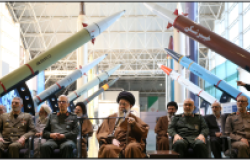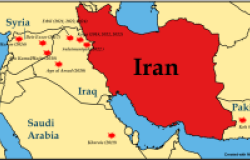<b>Live Webcast:</b> The Increasing Radicalization of European Muslims
with Mia Bloom, Assistant Professor of Political Science, University of Cincinnati
Overview
This meeting, jointly sponsored by the Woodrow Wilson Center's Division of International Security Studies, the RAND Corporation, and the U.S. Army's Eisenhower National Security Series, was part of an ongoing series on terrorism and homeland security.
Bloom noted that it is difficult to obtain hard demographic data on the European Muslim population because of the reluctance of some European governments to compile them. The influx of Muslims to Western Europe occurred in three broad waves. The first, which spanned the end of World War II to 1970, took place in response to the demand for labor in postwar reconstruction. The British and French drew immigrants primarily from their former colonies (e.g., Pakistan and Algeria, respectively), while Germany looked to Turkey. The second wave, during the 1970s and ‘80s, focused on the repatriation of families for those who had emigrated in the initial group. The third and most recent wave was Muslims seeking asylum from conflict regions or repressive governments.
Current estimates of European Muslims range from 35 to 50 million. (If Turkey were admitted to the European Union that number would rise to 90 million and constitute approximately 15 percent of the EU's total population.) The specific figures for the major European countries are: France – more than 5 million; Germany – approximately 3.4 million; Britain – more than 2 million.
Bloom argued that at the center of the collision between Muslims and non-Muslims in Europe are differences over what constitutes religious extremism and Islamophobia. A major factor impeding successful integration and assimilation stems from the rural background of the Muslim immigrants to Europe. Within this context, radical Islam has appeal to those who reject Western culture. Bloom stated that the United States has been far more successful than European Union countries in successfully assimilating immigrants from Muslim countries.
In the case of Germany, of the 3.4 million Muslims, 2.4 million are from Turkey. Within that total group, the German government estimates that 32,000 "extremists" are active in 24 groups; of which 3000 are considered "violent," and 300 are deemed "dangerous" (meaning that the individuals actually fought in the jihads in Bosnia or Chechnya). The extremists are seeking to recruit second generation immigrants with poor Arabic or Turkish language skills by translating radical propaganda into German.
Bloom discussed both the failure of West European governments to adopt effective integration strategies and the resistance of some within the Muslim community to assimilate. She cited the key events – the London and Madrid terrorist bombings, the assassination of filmmaker Theo Van Gogh in the Netherlands, and the Danish cartoon controversy – that have sparked increased Islamophobia and the rising popularity of anti-immigrant political parties (such as Le Pen in France).
Alternatively, European Muslims are feeling increased discrimination; according to one poll, the number of respondents stating that they have experienced discrimination has skyrocketed from 35 percent in 1999 to 80 percent in 2006. One indicator of the integration-assimilation challenge in Europe is the miniscule number of Muslims involved in community policing or counter-terrorism.
Bloom also touched on the feedback between political events outside Europe and the problem of increased Islamic radicalization. External events in Palestine, Iraq, and elsewhere find resonance with the European Muslim populations because of their local grievances. She noted that the resolution of these major political issues, however beneficial in their own right, would not end Islamic terrorism in Europe.
Thank you for your interest in this event. Please send any feedback or questions to our Events staff.










